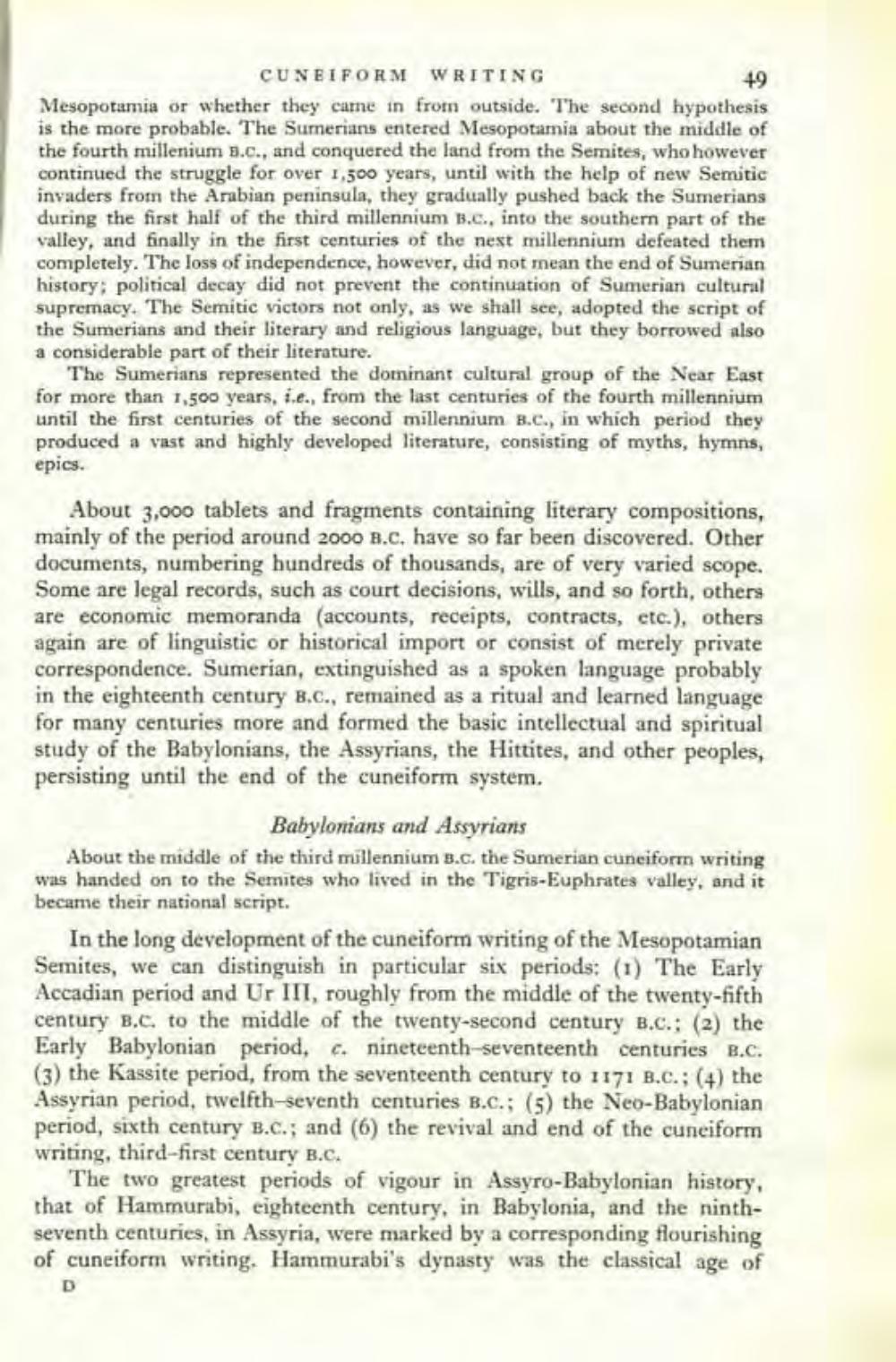________________
49
CUNEIFORM WRITING Mesopotamia or whether they came in from outside. The second hypothesis is the more probable. The Sumerians entered Mesopotamia about the middle of the fourth millenium a.C., and conquered the land from the Semites, who however continued the struggle for over 1,500 years, until with the help of new Semitic invaders from the Arabian peninsula, they gradually pushed back the Sumerians during the first half of the third millennium B.C., into the southern part of the valley, and finally in the first centuries of the next millennium defeated them completely. The loss of independence, however, did not mean the end of Sumerian history: political decay did not prevent the continuation of Sumerian cultural supremacy. The Semitic victors not only, as we shall see, adopted the script of the Sumerians and their literary and religious language, but they borrowed also a considerable part of their literature.
The Sumerians represented the dominant cultural group of the Near East for more than 1,500 years, i.e., from the last centuries of the fourth millennium until the first centuries of the second millennium B.C., in which period they produced a vast and highly developed literature, consisting of myths, hymns, epics.
About 3,000 tablets and fragments containing literary compositions, mainly of the period around 2000 B.C. have so far been discovered. Other documents, numbering hundreds of thousands, are of very varied scope. Some are legal records, such as court decisions, wills, and so forth, others are economic memoranda (accounts, receipts, contracts, etc.), others again are of linguistic or historical import or consist of merely private correspondence. Sumerian, extinguished as a spoken language probably in the eighteenth century B.C., remained as a ritual and learned language
any centuries more and formed the basic intellectual and spiritual study of the Babylonians, the Assyrians, the Hittites, and other peoples, persisting until the end of the cuneiform system.
Babylomans and Assyrians About the middle of the third millennium B.C. the Sumerian cuneiform writing was handed on to the Semites who lived in the Tigris-Euphrates valley, and it became their national script.
In the long development of the cuneiform writing of the Mesopotamian Semites, we can distinguish in particular six periods: (1) The Early Accadian period and Ur III, roughly from the middle of the twenty-fifth century B.C. to the middle of the twenty-second century B.C.; (2) the Early Babylonian period. 6. nineteenth-seventeenth centuries B.C. (3) the Kassite period, from the seventeenth century to 1171 B.C.; (4) the Assyrian period, twelfth-seventh centuries B.C.; (5) the Neo-Babylonian period, sixth century B.C.; and (6) the revival and end of the cuneiform writing, third-first century B.C.
The two greatest periods of vigour in Assyro-Babylonian history. that of Hammurabi, eighteenth century, in Babylonia, and the ninthseventh centuries, in Assyria, were marked by a corresponding flourishing of cuneiform writing. Hammurabi's dynasty was the classical age of




